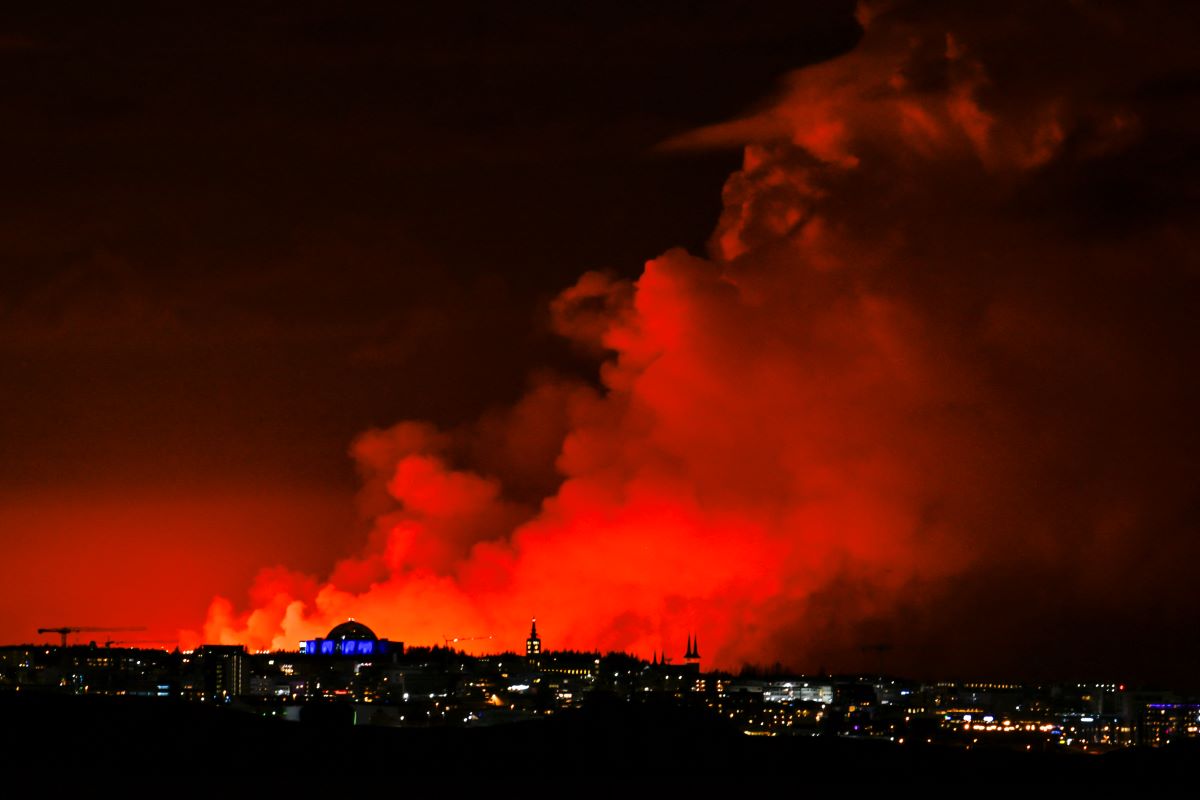(CNN) —Iceland's famous Blue Lagoon and the town of Grindavik are under evacuation after a volcanic eruption on the Reykjanes Peninsula, public broadcaster RÚV reported on Saturday.
Lava appears to be flowing rapidly north of Grindavik, just as it did during the February 8 eruption, RÚV said, citing the Icelandic Meteorological Office.
“The fissure is about three kilometers long and extends from Stóra-Skógfell towards Hagafell,” he said.
The evacuation process took about half an hour. Bjarne Anelsdottir, a senior police officer, told RÚV that about 700 people were in the Blue Lagoon and very few in Grindavik when the eruption started.

Volcanic eruption on the Reykjanes Peninsula, Iceland. (Credit: LIVEFROMICELAND.IS via Reuters)
Geophysicist Magnus Tommy Gumundsson, who has just returned from a helicopter flight over the site, told public radio RÚV on Saturday that the current eruption taking place in Iceland is the most powerful yet.
The very active fissure is now “longer, about 3.5 kilometres” and extends from the northern side of Hagafell and north to Stora Skogfell, Gumundsson said.
“Based on the speed of the lava flow,” Guðmundsson estimated, “it won't be long before it flows over Grindavíkurvegur,” the main road leading to the town of Grindavík.
Geophysicist Pall Einarsson said the earthquakes in Grindavik clearly followed the same pattern as they have since October with repeated flows of magma sometimes reaching the surface, adding that previous eruptions “were strong, lasted for a short time, but they were powerful.” While they continued.”

Reykjavik's skyline is framed by an orange sky due to molten lava flowing from a fissure on the Reykjanes Peninsula north of the evacuated city of Grindavik, western Iceland, on March 16, 2024. (HALLDOR KOLBEINS/AFP via Getty Images)
RÚV reported that Keflavik Airport and Iceland's regional airports were unaffected and fully operational after the eruption.
Volcanic gas could be detected in Reykjanesbær on Sunday, RÚV reported, referring to the city located next to the main Keflavik International Airport.
Located less than an hour's drive from Iceland's capital and largest city, Reykjavik, the Blue Lagoon is one of the country's most popular tourist attractions.
The site is part of the Reykjanes Peninsula in southwest Iceland, a thick strip of land that juts westward toward the North Atlantic Ocean from Reykjavik. In addition to the Blue Lagoon, the peninsula is home to Iceland's main airport, Keflavik International Airport.
Iceland is one of the most active volcanic regions on the planet. Instead of a central volcano, the Reykjanes Peninsula is dominated by a rift valley, with lava fields and cones.
The lake was evacuated in early March due to seismic activity. In November, it was closed for a week after 1,400 earthquakes were measured in 24 hours.

“Music buff. Social media lover. Web specialist. Analyst. Organizer. Travel trailblazer.”

:quality(85)/cloudfront-us-east-1.images.arcpublishing.com/infobae/TEQF6EONZRFGLLLDIDD4L2O4EE.jpg)

:quality(75)/cloudfront-us-east-1.images.arcpublishing.com/elcomercio/XU32LRAEZFDDPNVHLFU3CKVBYY.jpg)



More Stories
Sheinbaum, Galvez, Mainz campaign wrap-up, news and more
Sheinbaum and Mainz’s CDMX campaign wraps up: Road Alternatives and Street Closures
Ortega attacks Humberto Ortega and declares him a “traitor to the country”